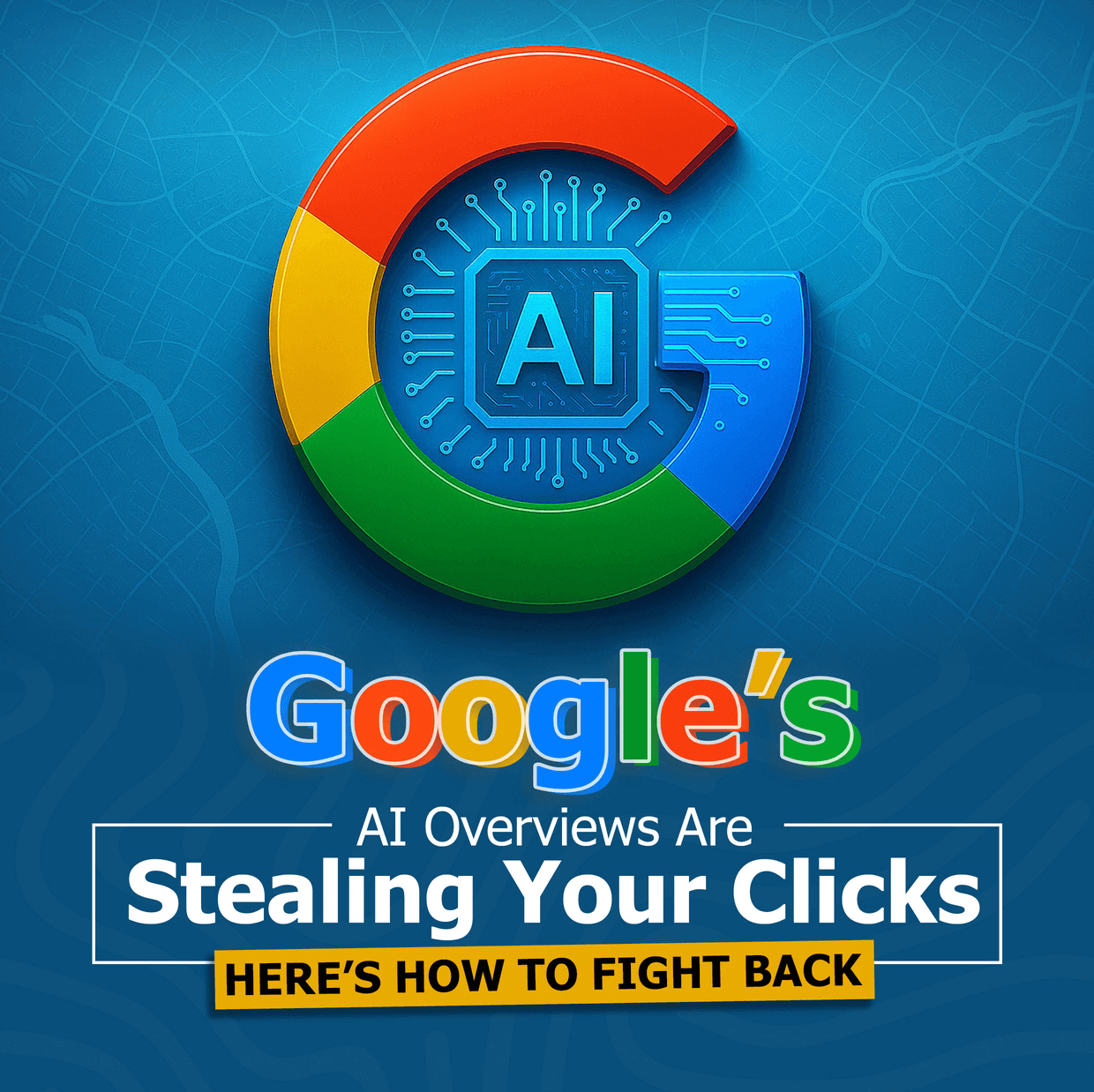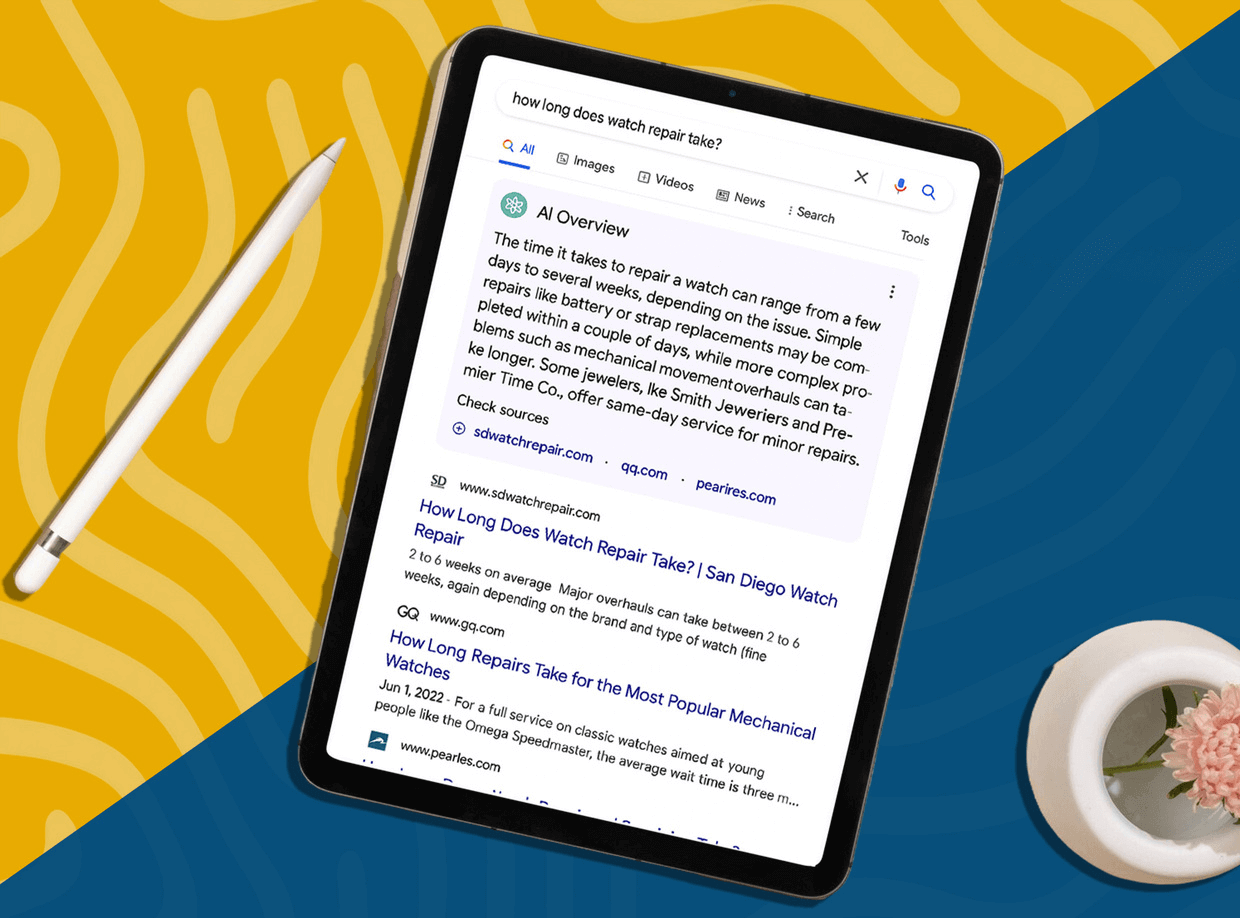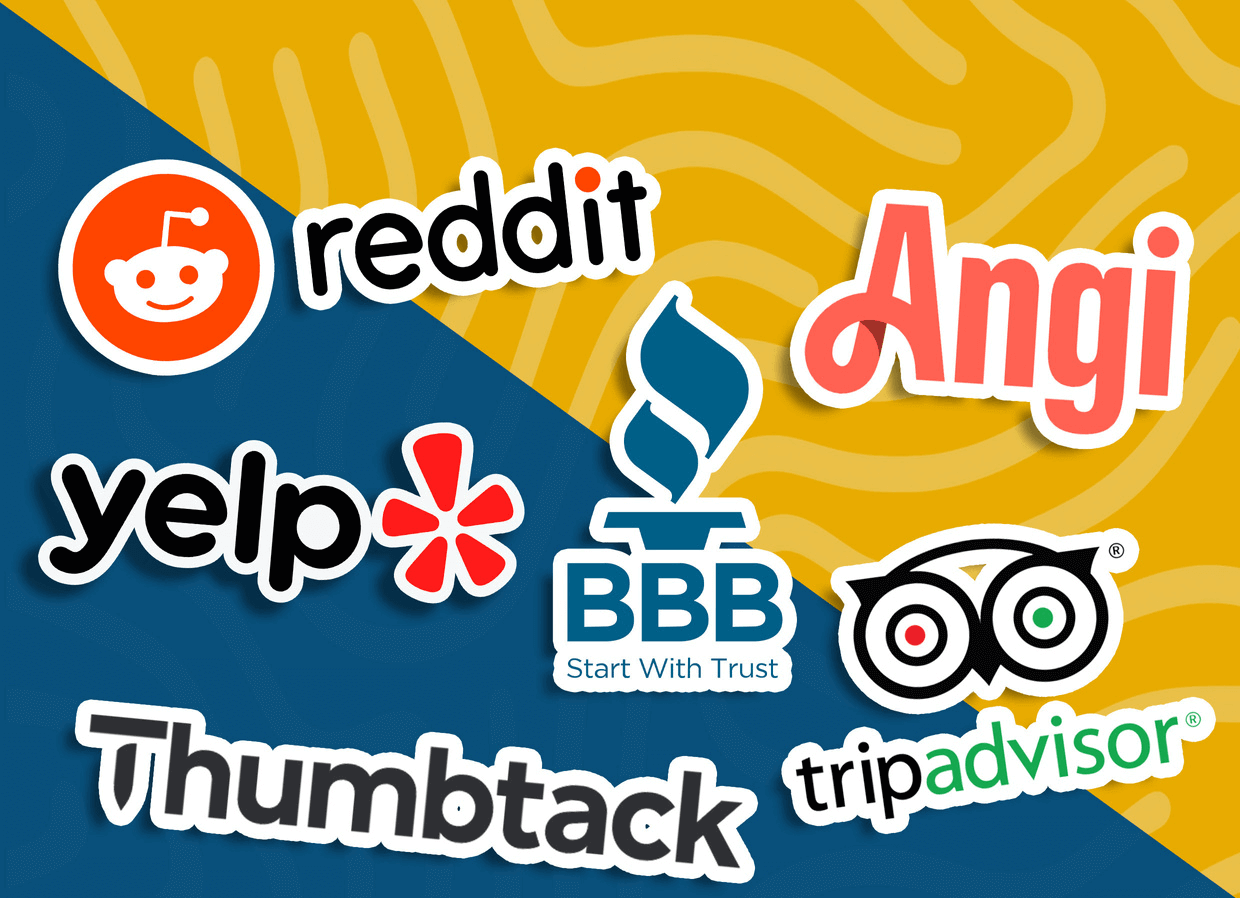
It’s not your imagination — your website traffic may be shrinking even though your rankings
haven’t changed.
haven’t changed.
Calls and contact form submissions might feel like they’ve slowed down. And if you’ve been paying attention to your Google Business Profile insights, you may have noticed a dip in the number of actions people are taking.
There’s a reason for this. It’s called AI Overviews, and Google has quietly rolled it out as part of its latest evolution in how search works. For local business owners, this shift is bigger than any algorithm update in recent memory — and it’s already changing how potential customers find and choose local providers
Let’s break it down and show you exactly what you need to do to stay visible (and stay profitable) in the age of AI search.

What Are AI Overviews?
It’s not your imagination — your website traffic may be shrinking even though your rankings haven’t changed.
Instead of showing a list of links, Google uses artificial intelligence to read mul- tiple websites, understand the content, and generate a short answer to the searcher’s question — right on the results page.
These overviews are written by Google’s generative AI models, not copied from any one site. And they’re not optional. Google is choosing when to show them, how they’re written, and what sources are referenced — if any.
In many cases, the AI-generated response shows up before any website links, Google Ads, or even the local map pack.
So while you may technically “rank” for a keyword, it doesn’t matter if the user never scrolls past the AI answer. This is known as a zero-click search, and it’s becoming the default.

Why This Matters for Local Businesses
Let’s say someone searches:
In the past, they’d get blog posts, maybe a local plumber’s FAQ, or Quora threads
Now, with AI Overviews in play, Google might respond with something like:
“A licensed plumber can typically fix a leaking pipe within an hour. Look for providers that offer 24/7 service and have strong reviews for emergency response. Options may vary by area.”
This type of overview doesn’t list local businesses based on proximity — but it may reference businesses whose content or reviews mention emergency response, 24/7 availability, or pipe repair speed.
The bottom line?
Google is no longer just showing results — it’s making recommendations.
And if your business isn’t part of the recommendation, you’re invisible.

How Google Decides What to Include
Unlike traditional SEO, where ranking factors were mostly understood (links, content, speed, relevance), AI Overviews rely on semantic understanding — meaning Google’s AI is trying to “understand” the best answer, not just reward keyword matching.
Here’s what it’s pulling from:

Your Google Business Profile, especially services, categories, and reviews

Trusted third-party directories like Yelp, Angi, BBB, and niche sites

High-quality blog content, how-to articles, and service guides

Aggregated content across forums, Reddit, and FAQ-style posts
If your business hasn’t been mentioned across these places — or your website is thin on helpful content — you may not make the cut.
And even worse: Google rarely links to your site in the overview. That means less traffic, fewer clicks, and fewer leads — unless you adapt.
What Local Businesses Need to Do Now
This shift doesn’t mean you’re out of the game — it just means you have to optimize differently.

1. STRENGTHEN YOUR GBP
(GOOGLE BUSINESS PROFILE)
(GOOGLE BUSINESS PROFILE)
Every word in your business profile matters more now. Update your services, write a detailed business description, and make sure your primary category is spot on.
Add more photos. Post updates weekly. AI Overviews often use your GBP as a source of factual data.

2. ENCOURAGE REVIEW CONTENT THATMENTIONSYOUR SERVICES
The AI scans reviews for patterns. If people say “emergency plumber” or “great for water heater replacement,” those keywords boost your chances of being summarized accurately. Ask for reviews that naturally include the service you provided — not just “great job.”

3. GET CITED IN LOCAL AND NICHE DIRECTORIES
It’s not just about backlinks anymore — it’s about citations. Make sure your NAP (Name, Address, Phone) is consistent across sites like Yelp, Angi, BBB, Chamber of Commerce pages, and industry-specific directories.
AI Overviews treat these as trusted signals.

4. ADD REAL CONTENT TO YOUR WEBSITE
Thin service pages don’t cut it anymore. Write detailed FAQs, blog posts, and howto guides specific to your niche. Example: A roofer can write “How to tell if your shingles need replacing after a storm.” A dentist might post “How often should you really get a deep cleaning?” This type of content is more likely to be summarized and referenced by Google’s AI.

5. DON’T IGNORE VIDEO
Google’s AI systems are increasingly analyzing video content, especially YouTube. A simple explainer video titled “What to Do If Your AC Stops Working” could get pulled into AI responses. Add a transcript, a title with intent, and link back to your site.

A Quick Reality Check:
Not Every Search Triggers an AI Overview
Let’s be clear: If someone types “dentist near me” or “best dog groomer in [city],” AI Overviews typically don’t appear. You’ll still see the map pack, local listings, and sometimes ads — just like before
But when someone searches a question — like:
“Is microneedling safe for sensitive skin?” “How long does HVAC installation take?”
Google may generate an AI Overview. And if it names businesses (or draws from your site, GBP, or reviews), you could be the one influencing that early-stage buyer.

Will This Replace Traditional SEO?
Not entirely — but it’s absolutely shifting where the attention goes. Think of it like this:

SEO gets you on the page.

AI Overviews decide if you get seen.
That means your strategy needs to evolve from “optimize for keywords” to “optimize for helpfulness, relevance, and context.” Google is betting its future on AI-powered answers. And if your business doesn’t adapt, you’ll be left behind.
Final Thought
The rise of AI Overviews is the most disruptive change to local search in years — but it’s also an opportunity. The businesses that take this seriously now will be the ones dominating the conversation when customers ask Google for help.
If you’re already showing up in the map pack, you’ve got a head start. Now it’s time to make sure Google’s AI sees you as the best answer too.
